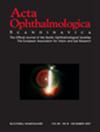‘EarlyAMDRate’: A grading instrument for OCT-based assessment of early lesions caused by age-related macular degeneration
Abstract
Background and Objectives
Long before any signs of age-related macular degeneration (AMD) become clinically noticeable, the disease starts with accumulation of deposits of extracellular debris and formation of lesions within the outermost layers of the retina. For a reliable imaging of lesions in these early stages, optical coherence tomography (OCT) turned out to be largely preferable to colour fundus photography. However, an adequate grading instrument for Early-AMD lesions within OCT data is missing in the literature as yet. The present paper aims to fill this gap.
Methods
‘EarlyAMDRate’, an instrument for OCT-based grading of Early-AMD lesions, is presented and documented. It comprises a questionnaire assessing a given lesion with respect to its relative position and interaction with the surrounding retinal layers, its brightness, special properties and state of progression (if applicable). Furthermore, the grading procedure includes a graphical masking of the lesion within the OCT image.
Results
For a consecutive sample of N = 100 Early-AMD patients, the ‘EarlyAMDRate’ grading instrument has been applied to leading OCT scans. Examples of masked lesions and processed grading questionnaires are provided. Both raw lesion diameters and cutting sizes follow a log-normal sample distribution.
Conclusions
‘EarlyAMDRate’ allows for unprecedented detail of description for single Early-AMD lesions which is adequate to the precision of underlying OCT imaging. The obtained grading information allows for a tracking of single lesions and their properties over time as well as for the generation of well-differentiated metric phenotypes for description of Early-AMD.


 求助内容:
求助内容: 应助结果提醒方式:
应助结果提醒方式:


